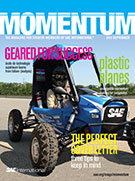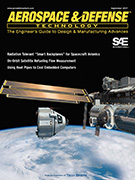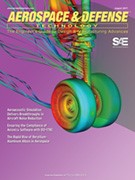Magazine

Automotive Engineering International 2003-11-01
2003-11-01
Frankfurt Motor Show concepts Visitors to the 60th IAA held in September were greeted with 125 world premieres, 60 of which were new vehicles by the world's automotive manufacturers. Prior to the public event, AEI editors scoured the show to put together this special section of Global Vehicles highlighting the best-in-show concept cars. Dynamic rollover testing on the way NHTSA announces that the 'fishhook' manuever, along with the static stability factor, will be used to rate vehicles for rollover propensity beginning with the 2004 model year. Shortening the chain Despite the trend toward increased outsourcing, the integration of compounding and molding operations at molded composite parts maker Composite Products resulted in a leaner and more economical supply chain. NASCAR research and development With the help of a new managing director and R&D center, the popular racing series is pursuing technology to improve safety and level competition.

















